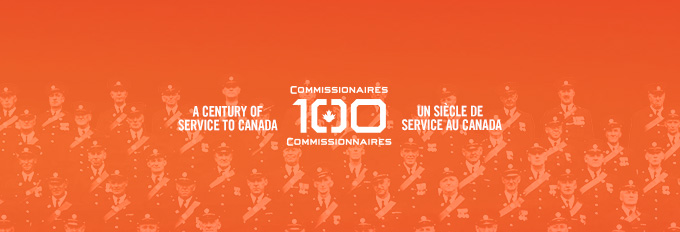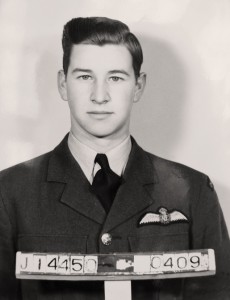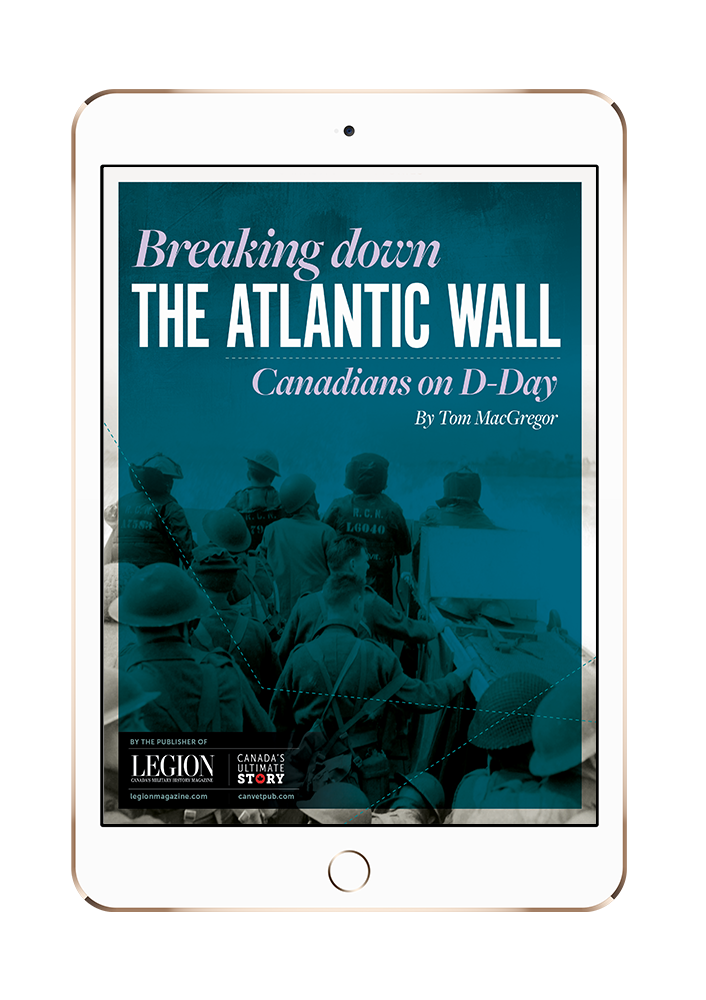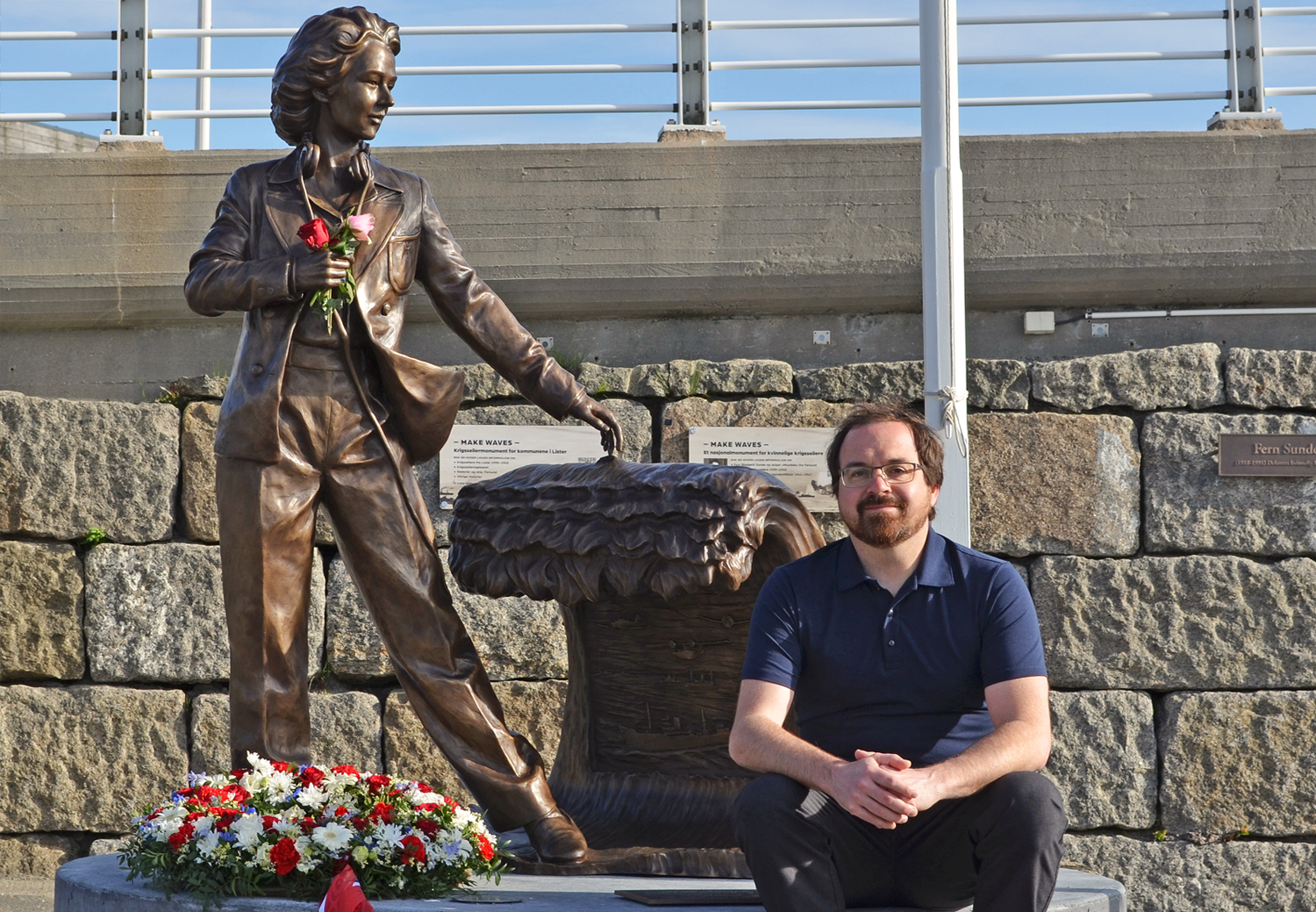
Sculptor Tyler Fauvelle poses with his monument of Fern Blodgett Sunde in Farsund, Norway, during its unveiling on May 8, 2025. [courtesy Tyler Fauvelle]
No one expected her to return from her initial voyage across the Atlantic. To make the crossing during the Second World War meant navigating mined waters in treacherous weather, knowing full well U-boats may lurk below.
But with a bucket nearby, Fern Blodgett Sunde made the trip 77 more times aboard the Norwegian merchant vessel Mosdale. Sunde was the first Canadian woman to earn a second class wireless operator’s certificate, and the first women to be a deep sea radio operator. She served until the war’s end, and 75 years later, her life and legacy was captured in a bronze public memorial in her hometown of Cobourg, Ont.
The same place she “watched the Great Lake ships go by, and dreamed of a career at sea, even though it would have been impossible for a young woman born at the end of the First World War.”
The sculptor, Tyler Fauvelle, explained in a Legion Magazine exclusive how and why a look-a-like of his Sunde monument ended up in the coastal Norwegian community of Farsund.
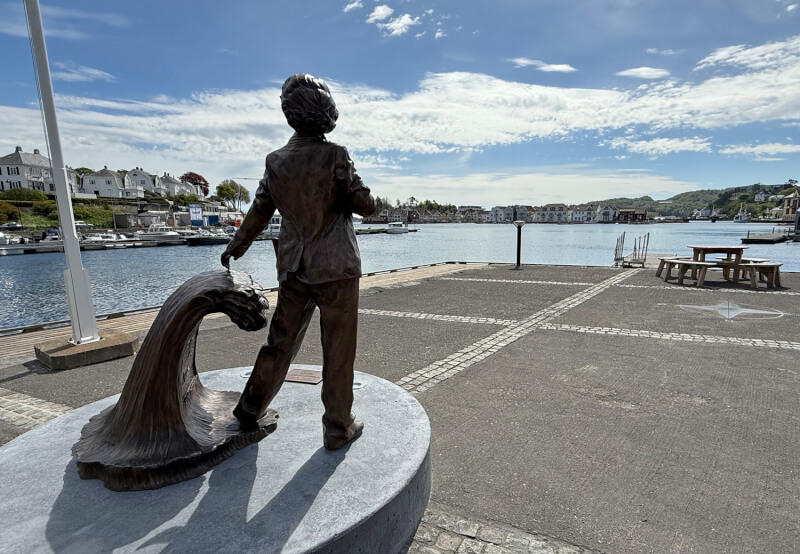
A momument to Fern Blodgett Sunde, a replica of one in Cobourg, Ont., faces the harbour in Farsund, Norway. [courtesy of Tyler Fauvelle]
About Fern Blodgett Sunde
At the outbreak of the Second World War, [Sunde] was determined to serve. She learned that there was a shortage of sea-going wireless operators and decided to take evening classes. Although rejected by the first few schools, who said they had never trained women and weren’t going to start now, she persisted and became the first-ever Canadian woman to receive a second-class wireless operator certificate.
While she was graduating and had just got her certificate, word reached her that a fully loaded Norwegian vessel [of the Norwegian Merchant Marine] was stuck in Montreal after their radio operator had suddenly quit. She took that as her chance. You can only imagine the look on Captain Gerner Sunde’s face—destined to be her future husband—when his new hire, “F. Blodgett” according to his records, turned out to be a young woman. Initially, he was unsure whether she could work aboard the ship because neither Canadian nor British ships permitted it. But Norway did.
The next thing she knew, she was heading for sea and the Battle of the Atlantic. This was 1941, a dangerous time in the battle when ships were going down faster than they could be replaced. Fighting her own battle of seasickness with a bucket by her side, not to mention the relentless threats of torpedoes, storms and surface raids, she bravely did her bit in keeping the Allied forces provisioned, sailing on Mosdale for a total of 78 of its 96 transatlantic voyages.
She opened the door to a sisterhood of sparks [a name for wireless radio operators], who followed her to sea until technology changed decades later. In 1943, the King of Norway awarded her the Norwegian War Medal. She was the first woman to receive the honour—let alone the first Canadian woman—and served until just after the war’s end, when she left to raise her kids and tend her garden in Farsund.
About casting her story in bronze
I have a strong interest in military history, and much of my work focuses on that. The Afghanistan War memorial in St Thomas, Ont.; the [WW II Indigenous soldier] Charles Henry Byce tribute in Chapleau, Ont.; and the [WW I Indigenous soldier] Francis Pegahmagabow statue in Parry Sound, Ont., are a few such works.
It was around 2017, and a member of my team, Deborah, was helping me do some research for another project when she came across [Sunde’s] story and was blown away by it. She approached me and said something a little like, “We’re doing this.” I saw the importance right away, and so I agreed.
Unlike every other sculpture I’ve done, the name came well before the design. “Make Waves” is a reference to her making waves getting on that ship, to the barriers she broke for women following in her footsteps, and the radio waves of her duties.
I sculpt everything by hand in my studio in Sunbury, Ont., and I cast my work in bronze at the Ontario foundry as it’s vital to me that everything is cast in Canada. Meanwhile, I wanted her clothes to be typical of what she would have worn while carrying out her onboard duties. We used photographs as a reference to get it right. There are also headphones around her neck as a testament to her profession. I had her standing forward, with one hand grazing the top of an impressionistic wave, which symbolizes her persistence in breaking down all of those barriers. However, Fern is also looking back in remembrance of all of those who served.
Inside the wave, I wanted it to look like a ship’s window, where you see merchant vessels and aircraft in convoy, as well as two U-boats outlined on the horizon that represent the danger that claimed thousands upon thousands of Allied lives at sea. Of course, the overarching theme is social change for women during the war.
We unveiled the first “Make Waves” [memorial to Sunde] in Cobourg in 2020, but I always hoped there’d be the opportunity to have another in Norway one day, too. It felt impossible until a little over a year ago when I was contacted by a citizens committee in Farsund that wanted a twin monument. I almost couldn’t believe it. But here we are now, with two memorials in Cobourg and Farsund to a remarkable Canadian trailblazer in both places she called home. What more could you ask for?
About the official unveiling
One word: incredible. The sculpture is located at the water’s edge between the Farsund archipelago on one side and the Farsund fjord on the other—with Sunde overlooking the ocean. The official unveiling had music, inspiring speeches, and military representatives from Canada, Norway and Britain. There were even people who once knew Fern telling me what she had meant to them. It’ll be an experience I shall never forget.
One of the most moving moments for me was seeing what it meant to the [Sunde] family that evening. Fern’s great-granddaughter lay on top of the monument and held her arm while resting her head—she didn’t want to leave her great-grandma. That told me all I needed to know about Fern.
My hope is that people in both countries, in Canada and Norway, will be inspired by her tale of standing up for freedom, peace, liberty—and, yes, of making waves.
This abridged interview has been edited for brevity and clarity.
Advertisement






